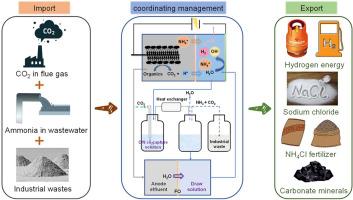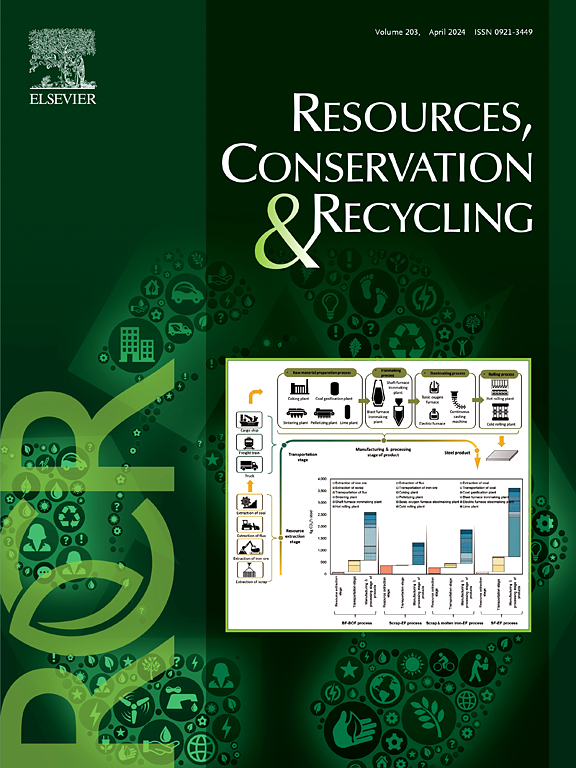Co-capture and recovery of ammonia and CO2 driven by microbial electrolysis system coupling with mineral carbon sequestration by industrial wastes
IF 11.2
1区 环境科学与生态学
Q1 ENGINEERING, ENVIRONMENTAL
引用次数: 0
Abstract
In response to escalating environmental challenges, innovative solutions for collaborative waste management and recycling have become imperative. The eco-friendly microbial electrochemical resource recovery system (EMERS) integrated microbial electrolysis cell and forward osmosis for CO2 capture from flue gas, ammonia and water recovery from wastewater and utilization of industrial wastes. 75 ± 1.8 % of ammonia from wastewater was enriched in MEC's catholyte and 38 % of synchronous water recovery from wastewater was achieved by forward osmosis, realizing multi-cycle recycling of catholyte. The enriched ammonia and CO2 were then recovered by 100 % and 62 % through thermal extraction. The salt brine exhibited high efficiency in ammonia and CO2 absorption, exceeding 90 %, and yielded hydrated basic magnesium carbonate. Additionally, hydrogen, NH4Cl and various carbonate products were also obtained. The EMERS demonstrated a promising strategy for integrated utilization of wastewater, flue gas and industrial waste, achieving pollution and carbon emissions reduction along with resource recovery.

微生物电解系统与矿物碳固存耦合驱动的工业废物氨和二氧化碳的共捕集与回收
为应对不断升级的环境挑战,创新的废物协同管理和回收解决方案已势在必行。生态友好型微生物电化学资源回收系统(EMERS)集成了微生物电解池和正渗透技术,用于捕获烟气中的二氧化碳、回收废水中的氨和水以及利用工业废物。75 ± 1.8 % 的废水氨在 MEC 的电解液中得到富集,38 % 的废水水通过正渗透同步回收,实现了电解液的多循环再利用。通过热萃取,富集的氨和二氧化碳的回收率分别达到 100% 和 62%。盐卤吸收氨和二氧化碳的效率很高,超过了 90%,并产生了水合碱式碳酸镁。此外,还获得了氢气、NH4Cl 和各种碳酸盐产物。EMERS 展示了一种综合利用废水、烟气和工业废物的可行战略,在实现资源回收的同时减少了污染和碳排放。
本文章由计算机程序翻译,如有差异,请以英文原文为准。
求助全文
约1分钟内获得全文
求助全文
来源期刊

Resources Conservation and Recycling
环境科学-工程:环境
CiteScore
22.90
自引率
6.10%
发文量
625
审稿时长
23 days
期刊介绍:
The journal Resources, Conservation & Recycling welcomes contributions from research, which consider sustainable management and conservation of resources. The journal prioritizes understanding the transformation processes crucial for transitioning toward more sustainable production and consumption systems. It highlights technological, economic, institutional, and policy aspects related to specific resource management practices such as conservation, recycling, and resource substitution, as well as broader strategies like improving resource productivity and restructuring production and consumption patterns.
Contributions may address regional, national, or international scales and can range from individual resources or technologies to entire sectors or systems. Authors are encouraged to explore scientific and methodological issues alongside practical, environmental, and economic implications. However, manuscripts focusing solely on laboratory experiments without discussing their broader implications will not be considered for publication in the journal.
 求助内容:
求助内容: 应助结果提醒方式:
应助结果提醒方式:


